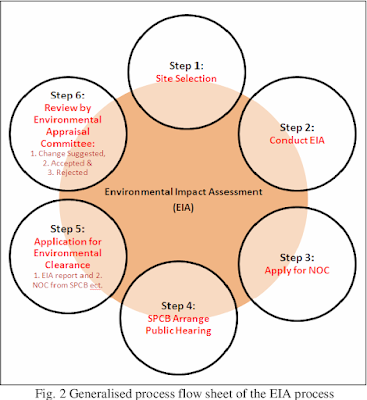The Environmental Impact Assessment (EIA) process plays a crucial role in ensuring sustainable development and mitigating the environmental impacts of various projects and activities. In today's world, where environmental concerns are at the forefront of global agendas, understanding and implementing the EIA process is vital for responsible decision-making. This article provides an introduction to the EIA process, highlighting its significance, key steps, and the benefits it brings to both the environment and society.
As human activities continue to expand, the potential for adverse environmental impacts grows as well. The EIA process acts as a comprehensive framework to assess and manage these impacts, thereby promoting environmentally sustainable practices. It entails evaluating the potential effects of proposed projects, policies, or activities on the environment and communities, allowing decision-makers to make informed choices that balance development with environmental preservation.
${tocify}
Following are the steps involved in a systematic EIA of a highway project:
1. Project definition
The importance and need of the project is defined here and its relation with regional and national developmental activity is mentioned in this section.
2. Screening
Screening is done as per the statutory notification. Screening criteria are based upon:
- Scales of investment;
- Type of development; and
- Location of development
3. Scoping
Scoping is a process of detailing the terms of reference of EIA. It is done by the consultant in consultation with the project proponent and guidance, if needed, from Impact Assessment Agency. Quantifiable impacts will be assessed based on magnitude, prevalence, frequency and duration and non-quantifiable impacts (such as aesthetic or recreational value). Significance is commonly determined through the socioeconomic criteria. After that the areas, where the project could have significant impact are identified and the baseline status of these will be monitored and then the likely changes in these on account of the construction and operation of the proposed project will be predicted.
4. Baseline information
Baseline data describes the existing environmental status of the identified study area. The site-specific primary data is monitored for the identified parameters and supplemented by secondary data if available.
5. Impact prediction
Impact prediction is a way of mapping the environmental consequences of the significant aspects of the project and its alternative. Environmental impact can never be predicted with absolute certainty and this is all the more reason to consider all possible factors and take all possible precautions for reducing the degree of uncertainty.
6. Evaluation of impacts and alternative criteria
For the project possible alternatives are identified and environmental attributes are compared. These alternatives cover both project location and process technologies. Alternatives consider .no project. also. Alternatives are then ranked for selection of the best environmental option for optimum economic benefits to the community at large.
7. Management plan
This section of the EIA will describe about the mitigation measures to reduce the harmful effects of the proposed project. Particularly, it will also contain the provision for rehabilitation of the people affected and displaced by the project.
8. Public participation
Law requires that the public must be informed and consulted on a proposed development after the completion of EIA report. Public participation can be assured by:
i. Consulting the public directly affected by the proposed project and the voluntary groups like NGOs or pressure groups having a concern with a specific aspect of the environment.
ii. Conducting direct interviews with the sample from public or by sending questionnaire to the people from public.
iii. Publishing the summary of EIA report for objections and suggestions from people.
9. Decision making
Decision making process involves the consultation between the project proponent (assisted by a consultant) and the assessment authority (assisted by an expert group if necessary). The final decision on acceptance, rejection or clearance is arrived at through a number of steps including evaluation of EIA and environmental management plan.
10. Monitoring Plan
Monitoring should be done both during construction and operation phases of a project. Monitoring will enable the regulatory agency to review the validity of predictions and the conditions of implementation of the Environmental Management Plan.

